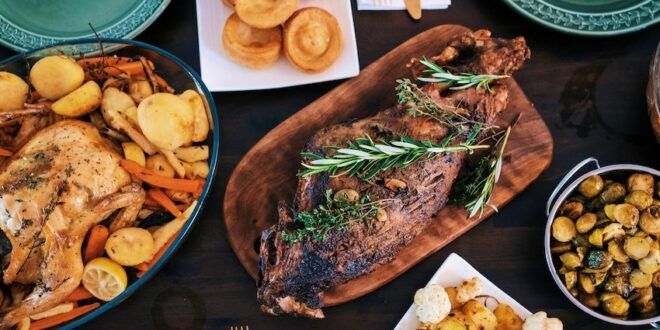Christmas Day leftovers can be a boon if you have friends staying, or if you want a break from cooking for yourself during the rest of the festive period. But as any Christmas Dinner hosts know, those leftovers are also a lot of work to deal with, and if food is to remain safe to consume, there are a few rules to follow for storage and reheating. We’ve outlined some of the basics below, to refresh your memories, and added in are some nifty ideas for how to use leftovers in clever ways.
Safety first
Take the temperature
Most harmful bacteria cannot grow at low temperatures. At home, make sure your fridge is operating at between 2°C and 5°C (fridge thermometers are inexpensive, so keep one on hand to check, if you’re not sure.) Don’t over-fill your fridge as this inhibits the flow of cool air and can result in ‘warm spots’.
Cover
Make sure there are covers for all serving dishes, and keep them on before, after, and inbetween servings. Don’t leave leftovers out of the fridge for more than 2 hours.
Cool
Food not consumed on the day it was offered, but has been treated safely, can be placed in the freezer or fridge for appropriate periods of time. Keep it in individual, sealed, clean, air-tight containers. The exception is cooked, cured* ham which can usually be stored in the fridge for up to two weeks as long as it is covered with a clean, damp towel, changed daily (*note: the notion of ‘curing’ varies from product to product, these days, so always follow storage instructions on wrappers, or if there are none, ask your supplier for advice).
In the fridge, raw and cooked foods should be stored in separate containers, with raw meats and chicken being stored on the bottom shelf of the appliance (this avoids any raw juices contacting ready-to-eat food).
Reheating
Leftovers are a labour saver – but if not handled correctly, they can be a source of food poisoning. The temperature ‘danger zone’ when reheating food is 5°C–60°C. To avoid this, you must reheat your leftovers until they are at least 75°C (that’s in the coolest part of the food if it’s a liquid, and in the middle if it’s a solid). Once the food has reached this temperature, keep it above 60°C until it is used. Always use a food thermometer to keep track of temperatures when reheating.
Park the picnic
If you’re dining el fresco this Christmas, cool the goodies with plenty of slicker pads, and park the chilly bin in the shade. Return food to the chilly bin in between servings, and aim to have no leftovers (if you do, discard them – don’t serve them again).
Loving the leftovers
Take-aways
If you know you will have older friends dining with you on Christmas Day, or family who live alone, consider purchasing some meal-sized freezer containers in advance. Assemble 2 or 3 meals which guests can take home and pop in their freezer to enjoy over the holiday period. ‘Plate’ these take-home meals as early in the day as possible, so the food is well-chilled or frozen before your guests leave with it.
New Year’s gathering
Whether you’re hosting a New Year’s gathering at yours, or heading to friends and family, keep your Christmas Day leftovers for the occasion. Arrange them artfully on platters (covered and ready to be reheated to a safe temperature), and strew with fresh herbs or edible flowers when the food is served.
Saucy brews
If Christmas Day sees you left with part bottles of still wines, use them up in sauces and gravies which can be frozen for a special occasion. If you’re done with cooking for now, pop the wines into ice cube trays, and freeze. They will go down a treat in summer punches. Sparkling wine will store in the fridge for a day or two, and will still be enjoyable when served with a fruit juice base – so invite friends round for a drink once the bustle of Boxing Day is over.
Food waste is no fun – but health must always come first. Enjoy your Christmas Day left-overs, but only if it is safe to do so!










Join the Discussion
Type out your comment here:
You must be logged in to post a comment.